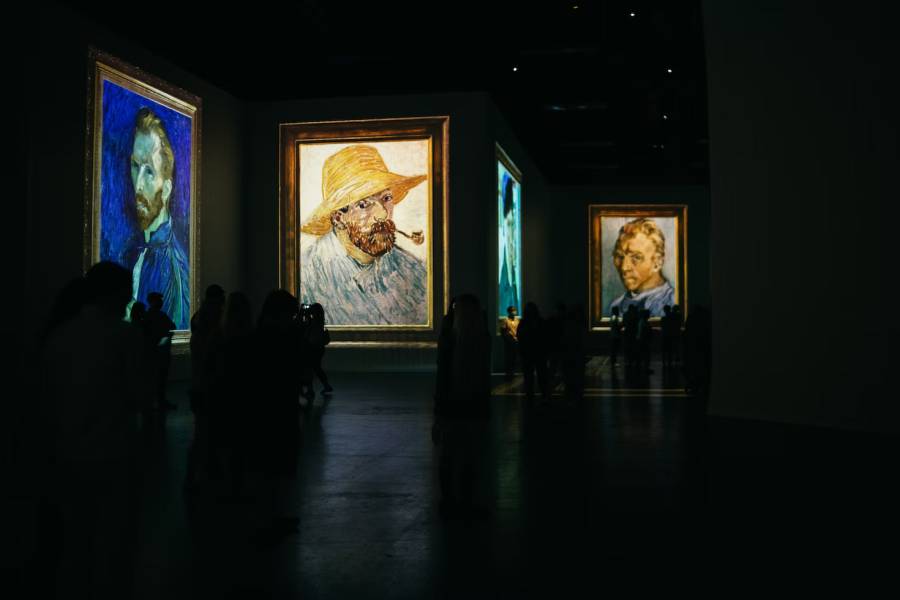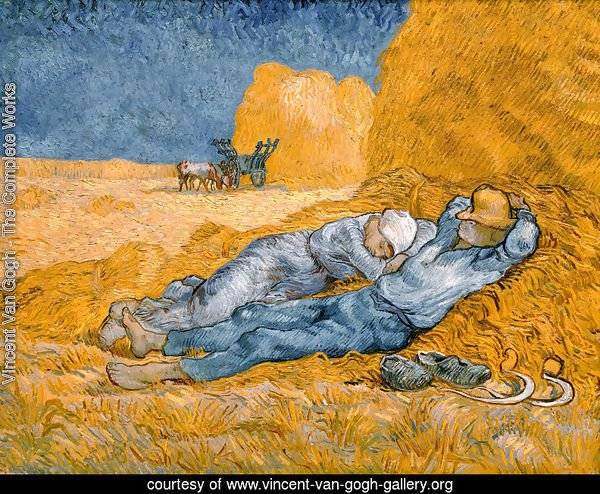Dutch artist Vincent van Gogh shot himself on July 27, 1890, at Auvers-sur-Oise with a 7mm handgun. At age 37, he passed away two days later. After spending two years in the southern part of France, where a psychological collapse led to a protracted stay in a hospital, Van Gogh traveled to Auvers around ten weeks ago.
In vain, Van Gogh hoped his new lifestyle would heal his fragile mental state. But he would also produce a great deal of the work that made him famous during his difficult years and days.
About Van Gogh
Van Gogh was the oldest of Anna and Theodorus’ five surviving children when he was born in March 1853. Van Gogh had moments of physical and psychological loneliness, instability, and melancholy throughout his life. He frequently suffered from malnutrition, poor health, and failed personal engagements with women. He didn’t truly commit to art until his late 20s, with encouragement from his younger sibling Theo, a Paris-based art collector.
In 1886, Van Gogh relocated to Paris. Van Gogh had only sold one picture during his lifetime; therefore, Theo had little luck selling his brother’s creations. However, he helped introduce Van Gogh to the thriving avant-garde French art world, where artists like Gaugin, Seurat, and Pissarro were active. Gaugin and Van Gogh were good pals. Van Gogh intended to persuade Gaugin and other artists to assist him in creating an artists’ colony in Arles when he decided to go there in February 1888.
The scenery and distinctive lighting of southern France sparked a new imagination, resulting in new emotional and color depths in most famous Vincent van Gogh artwork. With his swift and continuous effort, he produced 300 oil paintings, watercolors, and sketches.
He stayed at a string of inns nearby for many months while renting rooms in a local structure, the Yellow House, and utilizing it as a studio. He created pictures of his landlords, friends, and locals who thought he was gifted but unpredictable, tense, and out of the ordinary.
Gaugin ultimately arrived in Arles in October 1888. At the Yellow House, the two artists cohabitated and collaborated, but their contrasting personality types collided, and the connection quickly deteriorated. Van Gogh was disturbed by Gaugin’s haughtiness and dictatorial demeanor, which fueled his feelings of inadequacy and dread of rejection.
The situation reached its peak on December 23. Later, Gaugin would assert that van Gogh had knifed him. However, van Gogh likely chopped off his left earlobe by forcibly turning the knife on himself. Then, before fainting in his room, he wrapped the bloodied ear in paper and gave it to a woman at a nearby brothel.
He had no recollection of his self-mutilation when he was found the next day, which was probably an indication of a full mental collapse. However, Gaugin left Arles without waiting, and the two artists were never seen again. He subsequently painted a sequence of self-portraits while sporting a bandaged ear and portrayed the incident’s repercussions.
As his illness worsened, Van Gogh spent the following several months in and out of hospitals. Many of the Arles locals turned against him. Numerous people signed a petition calling for him to be expelled from the town, and some dubbed him “le fou roux,” meaning the red-haired maniac.
La Méridienne 1889 – Vincent Van Gogh
Van Gogh decides to check into a mental hospital
Van Gogh willingly checked himself into the Saint-Paul institution nearby Saint-Rémy in May 1889. However, scholars are still debating what caused his mental illness over a century after his passing.
Given his “manic” spurts of vitality and brilliance followed by protracted, incapacitating depressions, bipolar illness is the most frequently recognized diagnosis. The epilepsy diagnosis made by Vincent’s physician has since been disproved.
When Van Gogh was first permitted to perform his tasks outside the institution under supervision, his condition improved, only to later on quickly deteriorate. He was limited to drawing from memory or capturing his immediate surroundings because he could not explore his cherished locations.
The iconic “The Starry Night” was one of the most famous Vincent van Gogh artwork created during these tough times. This Vincent van Gogh drawing describes the sight from his asylum window while staring into the night sky.
While still in Saint-Rémy, Vincent van Gogh became increasingly pessimistic about his prognosis for recovery and released himself in May 1890. He traveled north, seeking a fresh start and a chance to be near Theo. He took up a residence in the Auberge Ravoux.
He also started visiting Dr. Gachet, who’d previously treated Renoir, Pisarro, and other artists. Theo thought that Gachet, a specialist in nerve problems and alternative medicine, would be helpful to Vincent, given that he was an amateur painter.
Van Gogh produced amazing works during his ten weeks at Auvers. He may have finished 70 pieces in as many days because his new surroundings had once again motivated him. The bright intensity and instability within him seeped into his paintings, but most of his works from this latter time are also chaotic and dramatic. One of his last works was “Wheatfield With Crows.” This Vincent van Gogh drawing shows a windswept, solitary field with a swarm of crows, sometimes used to represent death and rebirth.
Starry Night – Vincent Van Gogh
Conclusion
The cause of van Gogh’s suicide is unknown, but on July 27, he most likely strolled to a neighboring farm or stable and shot himself. Unfortunately, doctors weren’t in a position to remove the bullet since it penetrated his body so profoundly while missing his essential organs.
Van Gogh managed to make it on foot to the Auberge Ravoux, where a proprietor noticed him. The call was made for Dr. Gachet and others. Theo came shortly after and was with his brother when he passed away on July 29 from an infection.



